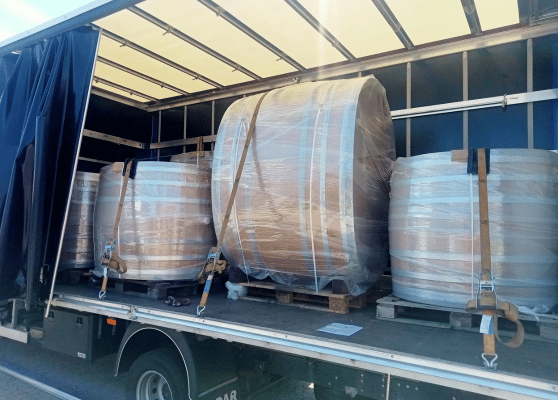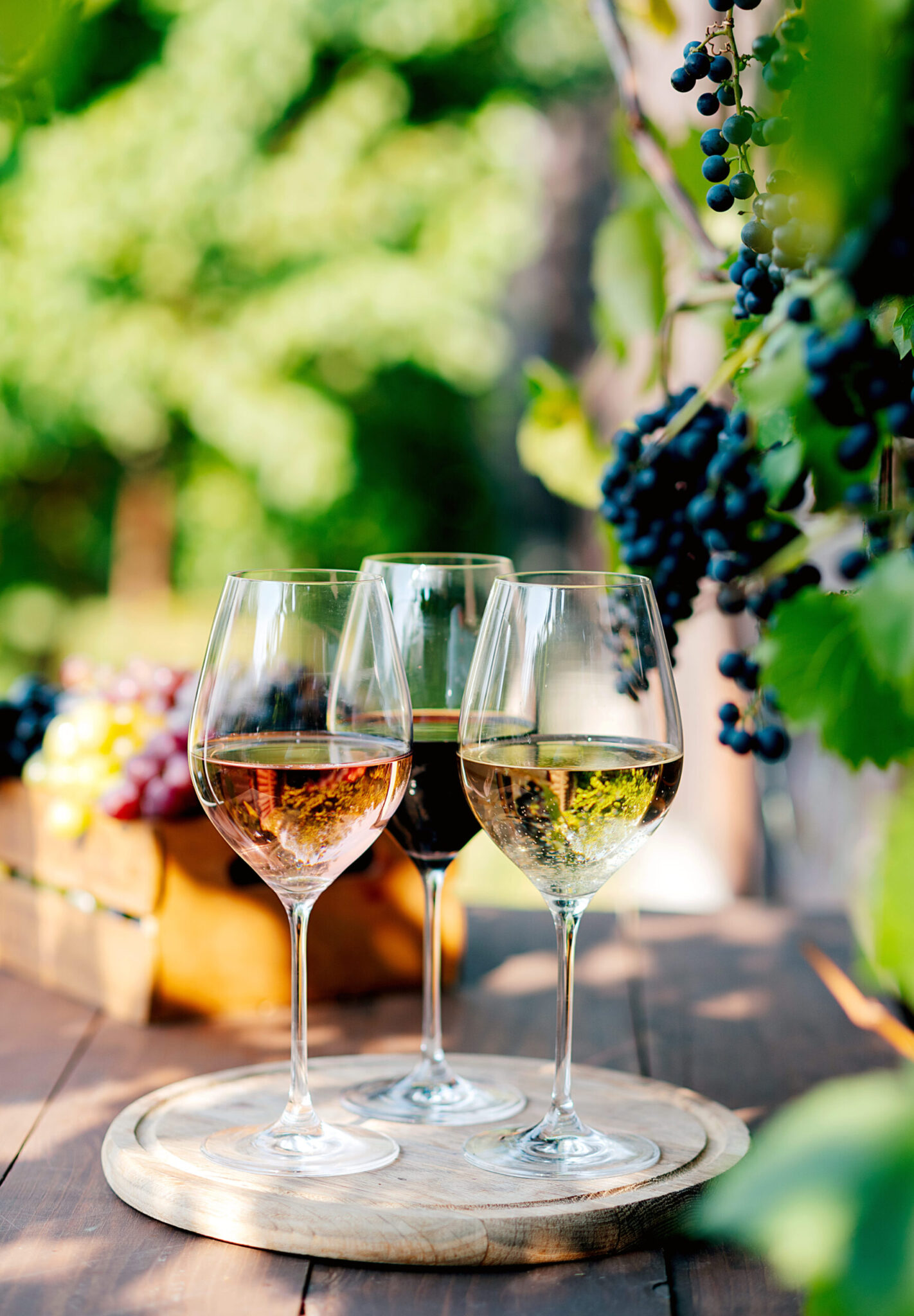Storage barrels: tradition and diversity in wine storage
There are barrels that you see – and immediately understand: there is more going on here than just storage. Something is growing here. Silently. Slowly. Genuinely.
Our storage barrels are not mass products. They are companions for winemakers who know: Character needs time – and room to breathe. If you don’t want to bend a wine, but rather refine it, you will find a quiet but powerful partner for ageing in our oval or round storage barrels.

What are storage barrels?
Storage barrels are large wooden containers used for maturing and storing wine, beer or other beverages. They can have a capacity of a few hundred liters up to several thousand liters. Their size and construction make them a symbol of traditional craftsmanship.
Why storage barrels?
Storage barrels are particularly suitable for winemakers who are looking for harmonious ageing over a period of years. Due to the larger barrel size, the wood influence remains subtle, while the wine still benefits from gentle micro-oxidation. This allows a soft, balanced structure to develop without dominant roasted aromas masking the original character of the grape.
Classic grape varieties such as Riesling, Pinot Noir and Silvaner in particular benefit from ageing in wooden barrels, as they retain their freshness and fine aromas. A large wooden barrel is also often the ideal choice for mature white wines or acidic red wines.
| Feature | Storage Barrel |
|---|---|
| Size | 500 – 5,000+ liters |
| Wood types | Primarily oak (also acacia) |
| Toasting | Toasted (often light toasting) or wine-steamed. |
| Wood influence on the wine | Low wood influence, supports fruitiness and structure of the wine without dominant toasted aromas. |
| Wine aging time | Often over one year. |
| Lifespan | Usable for several decades, as the wood leaches more slowly than in barriques. |
| Areas of application | Wines with a fruity character or traditional aging methods (e.g., Riesling, Pinot Noir). |
The Making of a Storage Barrel – Tradition and Precision in Handcraft
Producing a storage barrel requires great craftsmanship and a lot of time. While the manufacturing process is similar to that of a barrique barrel, there are some key differences due to the size and intended use. Storage barrels often hold several hundred to several thousand liters and are used over decades – high manufacturing quality is therefore essential.
Everything begins with the selection of the wood, which significantly determines the characteristics of the finished barrel. Slowly grown oak from regional forests is often used, as its dense structure allows for an even supply of oxygen and ensures gentle aging of the wine. After harvesting, the next step is drying, a crucial process that takes several years. During this time, the wood is air-dried under natural conditions, reducing tension and removing unwanted aromas.
The actual barrel construction requires manual precision: the individual staves (the wooden parts of the barrel) are precisely cut, bent, and fixed with iron hoops. Since storage barrels often hold thousands of liters, this step is carried out almost exclusively by hand in the case of large barrels. The wine receives only a subtle wood influence, preserving its original fruit aromas more effectively.
In the final refinement, the barrel is tested for tightness and thoroughly cleaned before being used for wine aging. The production of a storage barrel is a combination of experience, patience, and traditional craftsmanship – a process that ensures wines can mature under optimal conditions for many years.
The influence of storage barrels on wine
Compared to barrique barrels, storage barrels have a much more restrained influence on the wine. Their larger surface area in relation to their volume ensures that fewer wood notes are released, allowing the natural character of the grape variety and terroir to take center stage. Instead of actively shaping the wine with roasted aromas or strong tannins, storage barrels support the maturation in a gentle and subtle way.
The wood releases only minimal aromas, so that the varietal notes and mineral nuances of the terroir are preserved. The tannin structure of the wine is hardly affected, which makes storage barrels ideal for elegant, fresh wines that should retain their fruit and lightness. Nevertheless, the fine micro-oxidation that takes place through the wood pores allows a gentle supply of oxygen. This promotes the development of complex aromas and ensures a harmonious, balanced structure in the wine without losing its freshness.
| Factor | Influence of the Storage Barrel |
|---|---|
| Aromas | Storage barrels impart only subtle wood notes to the wine and preserve its natural fruit and terroir aromas. |
| Tannins | The wood releases only small amounts of tannins, allowing the wine to remain softer and more balanced. |
| Oxidation | The slow oxygen supply allows the wine to mature evenly and develop a harmonious balance. |
| Texture | Wines aged in large storage barrels retain their freshness and often appear more elegant and refined. |

Welche Weine profitieren von Lagerfässern?
Lagerfässer eignen sich besonders für Weine, bei denen der Fokus auf der Rebsorte und dem Terroir liegt. Sie werden häufig in Europa verwendet, insbesondere in Deutschlan
Which wines benefit from storage barrels?
Storage barrels are particularly suitable for wines where the focus is on the grape variety and terroir. They are often used in Europe, particularly in Germany, Austria and Italy.
- White grape varieties: Riesling, Grüner Veltliner and Chardonnay benefit from subtle ageing in storage barrels.
- Red wines: Varieties such as Pinot Noir and Sangiovese, which are known for their finesse, are often matured in storage barrels.
- Traditional wines: Some regional specialties, such as Chianti Classico or German Spätlese, use storage barrels to preserve the authenticity of the wine.
Vor- und Nachtteile von Lagerfässern
| Aspect | Advantages | Disadvantages |
|---|---|---|
| Long-term use | Storage barrels are extremely durable and pay off over decades. | The purchase of a large storage barrel is costly and requires high investment. |
| Wine character | They support the authenticity of the wine without overpowering it. | Winemakers who prefer intense wood notes may be disappointed by storage barrels. |
| Sustainability | Due to their long lifespan and the use of regional wood, storage barrels are an eco-friendly choice. | Storage barrels require a lot of space and are difficult to move. |
Modern use and trends
Although stainless steel tanks are widely used in modern wine production, storage barrels are experiencing a renaissance. Many winemakers value traditional ageing and combine it with modern methods to create unique wines. Hybrid approaches in particular, where storage barrels and stainless steel tanks are combined, allow for complex aromas and more precise control of the maturation process. In addition, many wineries are increasingly focusing on regional diversity by using wood from their surroundings to connect the wine even more closely with its terroir. Another important trend is sustainability – thanks to their long lifespan and the use of regional raw materials, storage barrels fit perfectly into environmentally conscious production.
Conclusion
Storage barrels stand for tradition, craftsmanship and quality in wine production. They enable gentle, harmonious ageing and emphasize the natural character of a wine without overpowering it. For winemakers who value terroir, sustainability and originality, they remain an indispensable choice. Whether for white or red grape varieties – storage barrels help to authentically preserve the identity and elegance of a wine.
